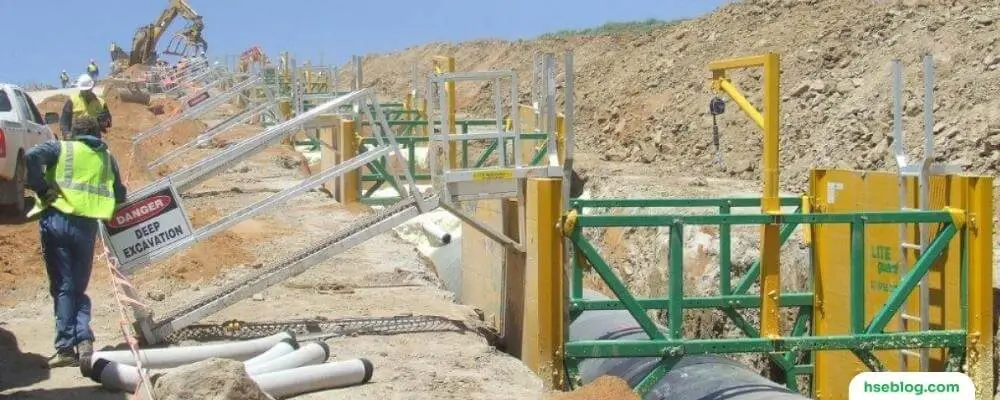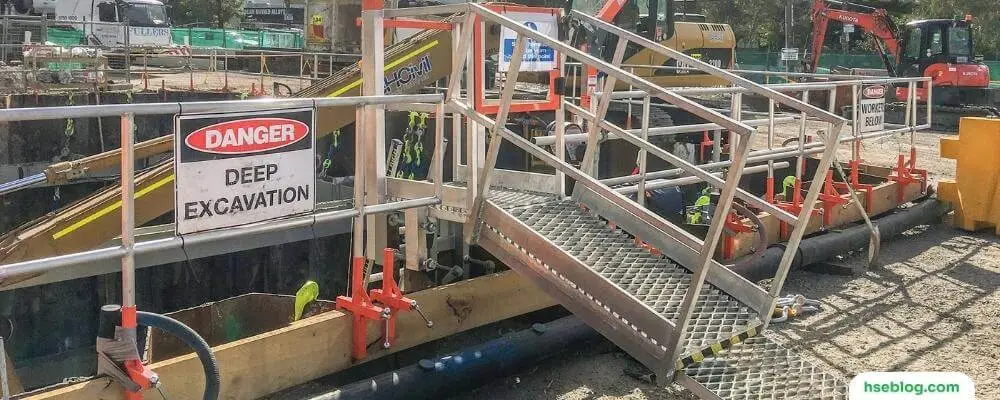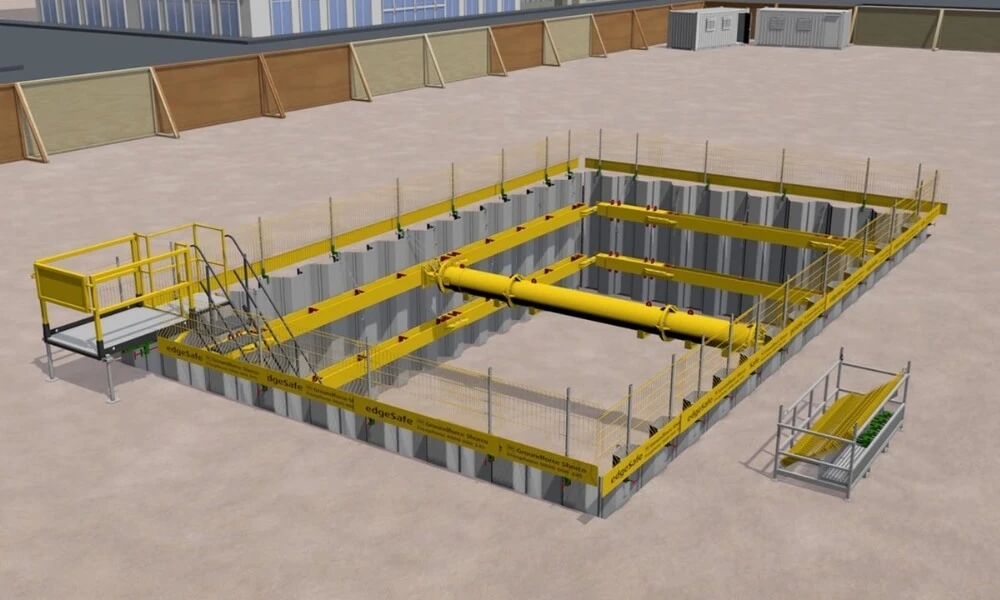In construction and civil engineering, excavations play a pivotal role. However, these operations entail more than just digging holes in the ground; they require meticulous planning and attention to safety, particularly when entering and exiting the excavation sites. In this blog post, we will unravel the intricacies of safe practices that should be adopted to ensure that the personnel involved are well-protected and that the project is carried out efficiently.
From conducting pre-entry assessments to the critical selection of equipment, every step holds its significance. Moreover, adhering to these practices is about ensuring safety and complying with regulations, preserving structural integrity, and safeguarding the project’s bottom line.
So, whether you are a seasoned engineer, a site manager, a construction worker, or simply someone interested in the behind-the-scenes action in construction, this comprehensive guide will provide insights that are not only informative but could also be life-saving.

Importance Of Safe Excavation Access And Egress
Safe excavation access and egress are critical for various reasons that ensure workers’ well-being and the excavation project’s efficiency and success. Below are the key reasons why it is essential:
- Preventing Injuries and Fatalities: The primary importance of safe access and egress is to protect the life and health of workers. Excavation sites can be hazardous, and without proper procedures, the risk of falls, trench collapses, and other serious incidents increases.
- Compliance with Regulations: To avoid legal repercussions and fines, it’s important to comply with local and international regulations like OSHA standards. These regulations are in place to ensure the safety of the workers, and adherence demonstrates a commitment to best practices.
- Efficiency and Productivity: Safe and easy access to and from the excavation site means less time wasted and increased efficiency. Workers are more likely to be productive when confident in their safety.
- Cost Savings: Accidents and unsafe conditions can result in delays, legal fees, compensation, and potential reputational damage. Safe practices can prevent these unnecessary expenditures.
- Worker Morale: When workers know their safety is a priority, morale is higher. This leads to a more positive work environment, leading to lower staff turnover and higher productivity.
- Preserving Structural Integrity: Safe access and egress often involve securing the walls and surfaces of the excavation site. This protects the workers and preserves the site’s structural integrity, preventing cave-ins that can derail a project.
- Public Safety: Often, excavation sites are located near public areas. Ensuring safe access and egress practices minimizes the risk to bystanders and prevents potential harm to the surrounding communities.
- Emergency Preparedness: In case of an emergency, such as an unexpected collapse or hazardous materials, safe egress routes are essential for a rapid and orderly evacuation.
- Enhancing Professional Reputation: Adhering to safety standards and ensuring safe access and egress reflects a company’s reputation positively. Clients, partners, and employees are more likely to engage with a company known for prioritizing safety.
- Insurance Considerations: Implementing and adhering to safe excavation access and egress practices can impact insurance premiums and claims. A strong safety record may lead to lower premiums, while a history of accidents can increase costs.
In summary, the importance of safe excavation access and egress cannot be overstated. It is vital for protecting workers, legal compliance, operational efficiency, cost management, and maintaining a good reputation within the industry and community.

Excavation Access And Egress | Safe Ingress Into And Egress
Excavation Access and Egress refers to the safe methods and procedures used for entering (ingress) and exiting (egress) an excavation site. This is crucial in ensuring the safety of workers. Here is a re-explanation of the points you provided, along with additional points that are important for safe ingress into and egress from excavations:
- Pre-Entry Hazard Assessment: Before anyone enters an excavation, assessing for possible hazards is imperative. This includes checking for hazardous substances, unstable soils, or water accumulation and ensuring that the surrounding areas do not pose any risks.
- Inspecting Excavation Walls: The stability of the excavation walls should be inspected for loose rocks or soil that could collapse. Shoring or shielding might be needed to stabilize the walls.
- Safe Entry and Exit Methods: Ladders, ramps, or stairways must be used for safe access to and egress from the excavation. These must be properly constructed, anchored securely, and compliant with OSHA guidelines.
- Personal Protective Equipment (PPE): Workers should wear proper PPE, such as helmets, gloves, and boots. If there is a risk of falling, fall arrest systems should be used.
- Visibility: Workers should wear high-visibility clothing to be easily seen by others, especially when heavy machinery is used near the excavation.
- Egress Routes: The same secure access method, like a ladder or ramp, should be used for exiting the excavation. If not feasible, an alternative safe egress route must be established.
- Monitoring and Communication: Conditions in the excavation should be constantly monitored. Any changes or hazards that arise must be reported to a supervisor.
- Training: Workers should be trained in the correct procedures for entering and leaving excavations and recognising potential hazards.
- Equipment Restrictions: Heavy equipment should be kept at a safe distance from the edge of the excavation to avoid collapse.
- Atmospheric Testing: In some cases, the air within an excavation may be hazardous. Testing for toxic gases or low oxygen levels is important, as using proper ventilation if needed.
- Emergency Response Plan: An emergency response plan should include having rescue equipment like harnesses and ropes available and ensuring that all workers are trained to use them.
- Weather Monitoring: Weather conditions can affect the stability of an excavation. Monitor the weather and be prepared to take additional precautions if necessary, such as not working during heavy rain.
- Spoil Placement: The excavated material (spoil) should be placed at a safe distance from the edge of the excavation to prevent it from falling back into the excavation or causing a collapse of the side walls.
- Regular Inspection: The excavation site should undergo regular inspection by a competent person, particularly after an event such as a rainstorm, which could alter the conditions.
By taking all of these precautions and staying vigilant, the safety of workers during ingress into and egress from excavations can be significantly enhanced.
Conclusion
Safe excavation access and egress is paramount in safeguarding the well-being of workers and ensuring the success of construction projects. By meticulously planning, employing the right equipment, adhering to regulations, and maintaining vigilance, we can mitigate the risks associated with excavation sites. This holistic approach not only fosters a culture of safety but also contributes to operational efficiency, cost savings, and the betterment of the industry as a whole. It’s imperative that all stakeholders recognize and continually invest in safety measures for excavation access and egress to build a sustainable and responsible construction environment.

